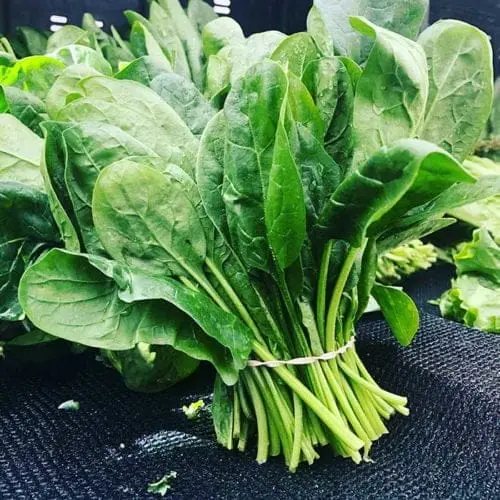
Discover the transition from sandals to scarves in Malta come March, delve into the allure of Eggs Florentine with Popeye's favourite snack, spinach, and explore the world of Blood Oranges and Jerusalem Artichokes available from March onwards.
Malta
Sandals and shorts… or jeans and a Scarfe?… when i first came to Malta, come March i’d be the only local with sandals and shorts on… I think I’ve acclimatised and this year it was jeans and a scarf…
Spinach my very first culinary ‘moment’ involved ‘Popeyes’ favourite snack, my love affair with spinach all started with some simple poached eggs, sautéd spinach and about half a litre of hollandaise, well maybe not quite half a litre … but damn near I reckon!
Eggs Florentine is just about the most unctuous dish possible with so few elements in its make up.. Maybe hollandaise isn’t so easy for everyone but once you master it the simplicity of this dish pays dividends in the end… and if you’re reading this Francis Craig Rourke… thank you for drilling into me many things, but this is up there with the best of what you taught me!
The gentle bitterness goes particularly well with the creaminess of dairy produce hence the Eggs Florentine, small younger leaves can be eaten raw in salds etc… and the older more rugged leaves need a little cooking, but be careful this particular leaf has one of the shortest cooking times of just about any vegetable.
Try a pinch of nutmeg whilst cooking it. Its available between March and June, always look for bright, green and crisp leaves, discarding any yellowing or wilted ones.

Blood Orange There was a time that Malta was world-famous for its citrus fruit, during the time of the knights, Maltese Oranges were shipped around the world and revered as the bejewelled fruit it was. Nowadays probably the Sicilians have taken that mantle as they produce the orange with the most vitamin C of any citrus fruit in the world.
The Sicilian Tarocco Orange, a Blood Orange is up there as one of the most popular oranges in the world, probably because of the unique microclimate offered on our neighbouring island. The soil its grown in allows it to produce a sweetness and juiciness unrivalled in the world of citrus fruit, which is probably why a lot of the fields on Gozo at one time or another imported Sicilian Red soil!

Jerusalem Artichoke This wonderful vegetable is about to disappear from the shelves it’s at its best between November and March. Although its called an Artichoke it isn’t truly an artichoke but a tuber, in fact a member of the sunflower family, in France its referred to as ‘topinambur’, it has a white almost nutty and crunchy texture that browns quickly when preparing it, it’s a good source of iron and makes a wonderful soup. If you’re as old as me you would have been taught to cook it in a ‘blanc’ where the acidulation helps to preserve its colour. Its also delicious cooked in brown butter or served raw as part of a vegetable dip served with a bagna càuda.

Sardine one of the oldest culinary words in the English language, dated back to the 15th Century it originally referred to any small fish and was interchangeable with the term ‘Pilchard’, many believe it to have derived from the Mediterranean and maybe even to the island of ‘Sardinia’ where these fish were once abundant. It has been suggested that any fish smaller than a given size would have been labelled a ‘Sardine’. In Gozo we have a fish called a ‘Volpi’ which I often thought looked very similar but in actual fact its better known elsewhere as a ‘Bogue’ or even [ and this is my favourite fish name ever… ‘Boops boops’.] – How can u not love a fish called ‘Boops boops’?
As an oily fish the Sardine or Bogue or anything that meets that criteria couldn’t be bettered in any way, than cooking it over an open fire and serving it with a home-made Sauce Romesco.

“fish for tomorrow recommends the Sardine as the methods used to catch it in Malta aren’t damaging to the stocks or the surrounding environment. This species has a high reproductive rate and mature early which helps this species to cope with fishing pressures..”
Eggs: In a natural environment eggs are at their best in Spring time, sure we can get eggs, thankfully all year round. However, from a nutritional point of view there is nothing quite like a Spring time egg. Ive actually seen some better restaurants in Europe use different recipes for different egg production times, simply because the yolk colour isn’t the same in the wintertime when the grass isn’t green or fresh fodder isn’t available, so they develop recipes for when the yolks are better in the spring time and or recipes for when the whites are better, capitalising on the natural quality of the given eggs at any particular given time of year. Which is a great way to think about it.

At Med.kitchen, our passion lies in crafting exceptional culinary experiences through our online platform. We specialise in sharing a wealth of knowledge via articles, recipes, courses, and online mentoring, aiming to inspire both novice and seasoned chefs alike. Our focus has shifted from private dining to being an online source of gastronomic inspiration, allowing you to explore and refine your culinary skills from the comfort of your home..